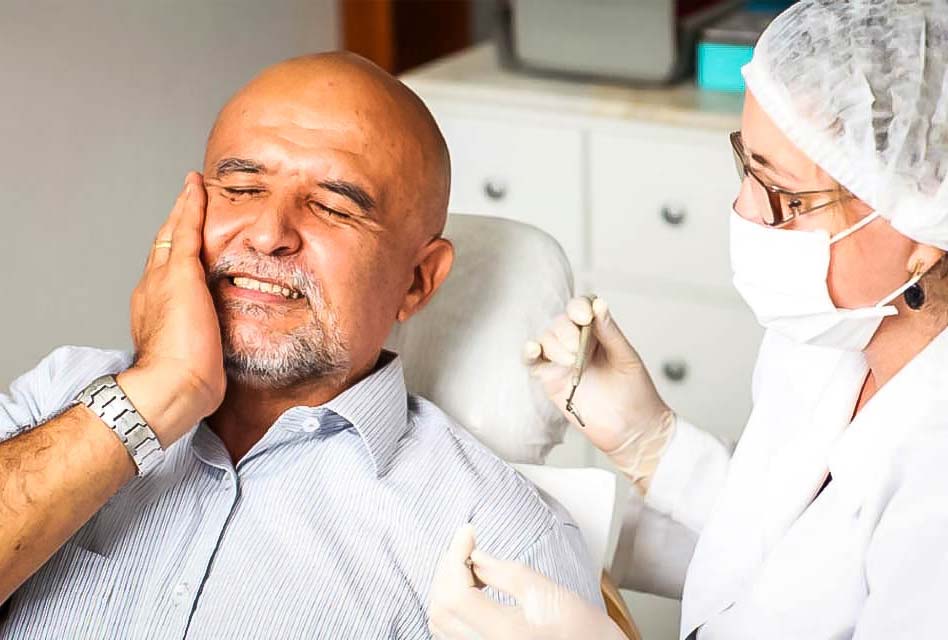If you had dental fillings but you don’t know what to expect, here are some detailed situations that may happen after, and what you should do if you encounter them. It is important to point out that each filling is unique, and your dentist’s recommendations are more important to consider than the following article.
Anaesthesia
Your dentist would most probably inject you with local anaesthetics in order to numb your tooth before proceeding with the removal of the cavity in it and/or the old filling. As the anaesthesia wears off, you might feel pins and needles in the surrounding area before feeling normal again.
The numbing effect lasts anywhere between an hour and several hours from the time of the beginning of your appointment. Try not to eat anything until the numbing goes away to avoid hurting yourself by chewing on your lips, cheeks, or tongue. If you do need to eat something, consider liquids or soft foods such as yogurt or applesauce. In this case try to chew on the opposite side of where the fillings were done.
If your child had a filling, observe her or him until the numbing wears off. Children tend to play and bite on the numbing area because it’s a new and strange feeling for them.
If you got local anaesthesia, the injecting site might become sensitive for a few days. No particular precautions should be taken, as this pain will go away.
Eating and drinking
Depending on what type of material was used, fillings may take a while before becoming totally hard, and as a precaution, your dentist might ask you to wait before eating.
If silver fillings (grey fillings or amalgam) were used, it takes a whole 24 hours before they become hard. Dentists would recommend not to eat anything for the first hour after the appointment, and to wait 24 hours before eating hard foods.
On the other hand, white fillings (or composite) become hard instantly during the appointment, and eating immediately is permitted, as long as your mouth is not still numb.
Jaw pain
 If you had to do several fillings in one appointment, or just one filling that was complex to do, you then had to keep your mouth open for a long time. After the appointment, your jaw might become sensitive when you open and close your mouth. This jaw pain can last a few days and it will go away. Eating soft foods can help your jaw to rest during that period of time.
If you had to do several fillings in one appointment, or just one filling that was complex to do, you then had to keep your mouth open for a long time. After the appointment, your jaw might become sensitive when you open and close your mouth. This jaw pain can last a few days and it will go away. Eating soft foods can help your jaw to rest during that period of time.
If you experienced jaw pain before your fillings were done, and even way after, then you might be suffering from jaw disorder (TMD). It would be then important to mention it to your dentist to get the proper treatment.
Gum irritation
Gums might be irritated after the dentist performs a filling on a close by tooth. The initial cavity might have been close to, or even lightly beneath the gums.
Also if your cavity was in between two teeth, then your dentist would have required more instruments. One of them is called a matrix band, and it is usually placed around your tooth to give the shape of the new filling. A matrix band can leave the gums irritated for a few days.
If you experience bleeding or pain on your gums, you may rinse with salted water, a few times a day, after your appointment. This will help gums get well faster.
Checking your bite
It’s important to check how your bite feels after the local anaesthesia effects have gone away. When your mouth is not numb anymore, your teeth should be able to close down like the way they did before your fillings appointment. If not, then one of the fillings is high.
When your dentist did your fillings, he or she checked your bite at the end of the appointment. You were asked to bite down on a piece of coloured paper to verify if there were interferences. But sometimes you might be so numb that you don’t close correctly to reveal the places where your fillings are high.
If your bite is not right, you would feel that your other teeth are not touching when you close down. It would be then important to call your dentist and make a minor adjustment because a high filling doesn’t improve by itself and may cause further problems.
Post-operative pain
Following dental fillings your teeth might be sensitive to hot and cold for a few weeks. To reduce the pain, you can avoid hot and cold foods and drinks, like hot tea or ice cream. If that pain persists for months, or if it becomes intolerant, it’s important to call your dentist and check if there are other problems.
Your cavity might have been very extensive, which caused your filling to be deep in your tooth and close to the nerve. Your tooth may then be sensitive for a longer period of time. You might need to use over the counter painkillers to help.
If you have a deep filling, the tooth might always stay healthy and no further treatment would be needed. But such a tooth remains at risk. If its nerve suffers from inflammation or infection, then root canal treatment would be needed.
Tight contacts
If the initial cavity was in between two teeth, the new filling on the affected tooth should ideally have a tight contact with the other tooth. This means that when you floss, you would feel tightness as the floss goes through the contact between your two teeth. If you feel a gap instead, then you have an open contact, which might retain fibrous foods between your teeth and cause gum problems.
Follow up with your dentist
For best long-term results, it is important to follow your dentist’s recommendations and continue going for regular check-ups every 6 months.
But after a dental filling, contact your dentist if you have persisting issues:
- if you feel that your bite is not correct;
- if the you experience pain on your tooth that does not go away with regular pain killers;
- if you stay numb beyond 24 hours after your appointment;
- if your tooth remains sensitive to hot and cold months after your appointment;
- if you feel there is a crack in your tooth;
- if your tooth has colour changes.
References
- Wikipedia (Dental restorations).
- National Institute of Dental and Craniofacial Research (Improving Materials for Tooth-colored Fillings).
- WikiHow (How to care for a tooth filling).
The information above should be used as a reference only. Any medical decision should not be taken before consulting a health care professional.
The masculine gender may have been more used in the article, but without prejudice, to make reading easier.
Category: articles
- 10 myths and facts about root canals
- 10 things you didn’t know about teeth
- 10 ways to crack or break your teeth
- 5 reasons why baby teeth are so important
- 5 things you didn’t know about wisdom teeth
- 5 ways to provide the best dental care for your children
- 6 reasons why flossing daily is so important
- 8 ways to stay kissable for Valentine’s Day
- Anaesthetics and sedation for oral treatments
- Bisphosphonates and oral health care
- Can good dental care save money?
- Cancer treatments and oral health
- Causes and consequences of tooth loss
- Dementia and tooth loss
- Dental avulsion: what to do when you have a knocked out tooth
- Diabetes and dental care
- Easter tips for healthy teeth
- Ebola virus disease
- Electric or regular, which toothbrush is better?
- Halloween, good and bad treats
- Heart disease and dental care
- How smoking affects dental and oral health
- How to have a beautiful smile?
- Invisible orthodontics
- Oral hygiene kit for travellers
- Precautions to take after dental fillings
- Pregnancy and dental care
- Sexual hormones – are women more susceptible to cavities?
- Smoking and gum disease
- Tips to overcome dental phobia and the fear of dentists






This is some really good information about how to protect your dental fillings after getting them. I liked what you said about how you might need to use some painkillers if the filling was really deep. That is a good thing for me to know because I need to get a filling in the next few weeks.
I hope all goes well with your fillings 🙂
These tips on how to keep your dental fillings safe after obtaining them are incredibly helpful. I appreciated what you said about how if the filling was particularly deep, you could need to take some medications. That’s helpful information for me to know because I need to get a filling soon.
Thank you! But medication is not always needed.